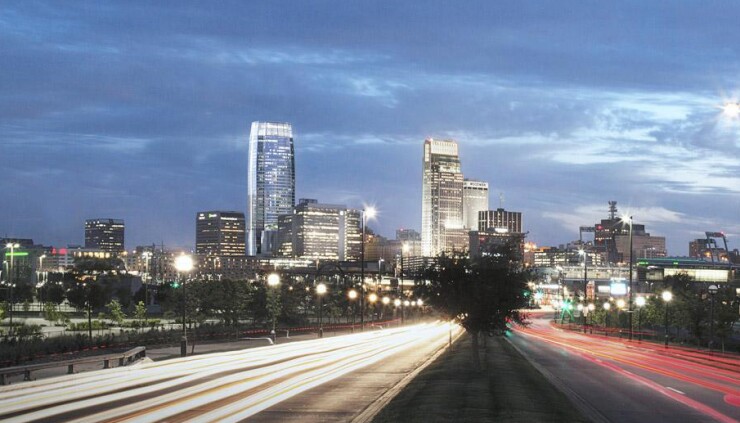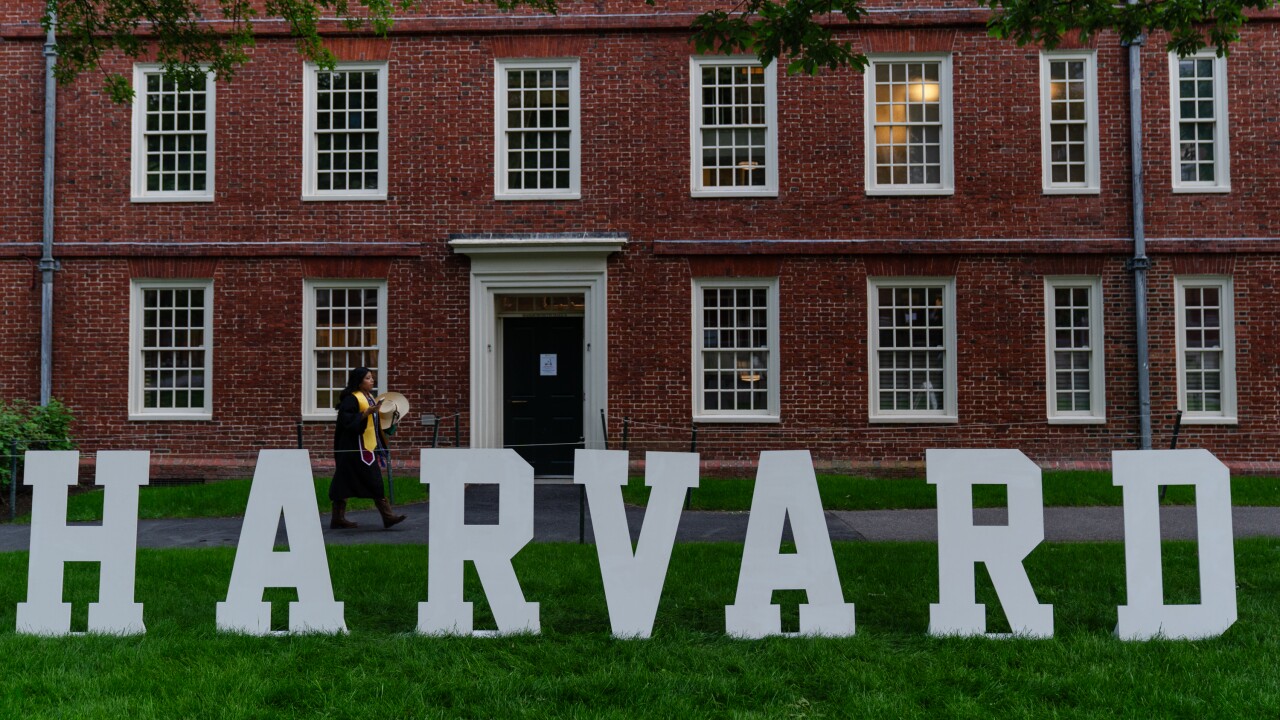The Omaha, Nebraska, City Council approved $440 million of borrowing to pay for a three-mile downtown streetcar route, cementing financing for a project billed as central to multi-billion-dollar urban core makeover.
Ordinances approved by the council last week allow the city to issue over the next five years $80 million of lease purchase revenue bonds and $360 million of tax-increment financing bonds to pay for construction of the $306 million project and purchase needed equipment.
The city would be on the hook for repayment of only the lease revenue bonds with the TIF bonds solely secured by the increased property revenues generated from properties within the district.

"We have studies that show we will have ample TIF revenue from development along the streetcar route to pay all bonds including lease purchase," Omaha Finance Director Stephen Curtiss said in an email. "The revenue models being used assume less development in the area then the last 15-year average."
The actual timing, term and structure on the borrowing "will be revisited later in 2023," Curtiss said. The city has a longstanding relationship with D.A. Davidson as underwriter on its bonds.
Mayor Jean Stothert and
City officials say the project will promote billions of dollars in new downtown development while creating jobs and improving access to entertainment, health care, and educational institutions.
"It's the right time for Omaha to support a streetcar," Stothert said. "Omaha is rapidly developing from the riverfront to the University of Nebraska Medical Center. A streetcar will lead to additional development of our core which benefits the entire city. Mutual of Omaha's plan to build a new downtown headquarters is the first example of what is possible and why now is the time."
Stothert stresses that the project is being funded without a property tax or sales tax hike.
More than $4 billion in development has been completed, planned, or is underway in downtown Omaha and midtown including the $2.6 billion University of Nebraska Medical Center/Nebraska Medicine expansion.
That project is
In promoting public support for the streetcar project as a key piece of the downtown revitalization efforts, the city pointed to studies that show property values around streetcars have risen in other cities.
The tax increment financing district covers the route and properties within three blocks. Estimate project the revenue generated within the TIF district from growth in property tax revenues will exceed the estimated construction and financing costs by at least $30 million. Those funds would go towards other downtown projects such as affordable housing, one-way/two-way street conversions, bikeways, and pedestrian improvements.
Omaha will join
The annual operating costs would be covered by revenue that flows into the city's Parking and Mobility Division Enterprise Fund from garage parking fees and meters. While the city will own the streetcar, a new Streetcar Authority established earlier this year by the city and Metro Transit will operate it.
The city hopes to begin construction in 2024 and believes the streetcar system will be up and running in 2026, when the Mutual of Omaha tower is expected to open.
The streetcar project is part of a larger transit plan known as the
Officials from Mutual of Omaha, a 113-year-old insurance and financial services company, tied plans for their new headquarters office tower downtown to the city's support for the streetcar project.
"A modern urban transportation system in the form of the planned streetcar line makes this project possible by providing convenient access to our planned headquarters tower and by allowing us to think creatively about many aspects of the project," Mutual of Omaha Chief Executive Officer James Blackledge said in the January announcement. The company is also renovating its midtown building.
The new 44-story building will be the city's tallest. Construction begins next month.
City Council members endorsed the borrowing in a six-to-one vote after several members said they were satisfied with the Stothert administration's commitment to negotiations to prevent the Metropolitan Utilities District from passing on costs to ratepayers to relocate water and gas lines,though the public natural gas, water and wastewater utility said it couldn't guarantee the outcome.
Ahead of the vote, council members pressed city law department representative Jennifer Taylor and MUD General Counsel Mark Mendenhall on the status of negotiations over the costs and whether there was a guarantee in place to keep the district from passing on some of the roughly $20 million costs.
"I cannot sit here and express to you all that we are confident this will result in no rate increase" but the utility has a "shared goal" to minimize the impact, Mendenhall said.
Several council members called the project transformative and said they believe the city estimates that TIF revenue can cover the project, including the lease bonds.
"I would not be voting for something if I felt it would cause the taxpayers to pay for it or there would be any increase in taxes," said council member Aimee Melton.

Development plans benefit Omaha's double-A general obligation ratings with S&P specifically citing the Mutual of Omaha and university projects.
"Given the city's affordability, aggressive approach to annexation, and robust development pipeline, we expect it to continue to experience strong AV growth over the immediate and medium term," S&P said in a report last month ahead of the city's $92 million GO sale.
S&P rates the city GOs, lease revenue and special tax bonds at AA-plus with a stable outlook.
Moody's Investors Service rates Omaha's GOs, lease revenue bonds, and sanitary sewerage system bonds Aa2 with a stable outlook, and rates special tax bonds at Aa3. The city has about $1 billion in debt associated with its governmental type activities and just over $400 million in enterprise related debt, Moody's said.
The city's outstanding lease revenue bonds are payable solely from the rental payments and secured by the city's general obligation pledge to pay the rental payments, which are not subject to annual appropriation.
The ratings benefit from healthy reserves and two consecutive years of general fund surpluses fueled by healthy sales tax collection and federal COVID stimulus funds including $106.5 million from the American Rescue Plan Act that the city directed to pay for affordable housing, community grants, tourism, public spaces, and other recovery efforts. The city has $6 million left of its full ARPA funding allocation. The city also expects a surplus this year.
The city's pension burden remains "a source of credit pressure due to inadequate contributions and poor investment returns given the optimistic assumed rate of return," S&P said.
The city's police and fire plan is 63% funded with an unfunded liability of $605 million while a general employees plan is 59% funded with an unfunded tab of $209 million. The other post-employment benefits liability is $513 million.
"While we are confident in our long-term solutions, pension reform will remain a priority for both our employees and taxpayers," Stothert said of the city's pension reforms in a statement on the rating agency reports.





